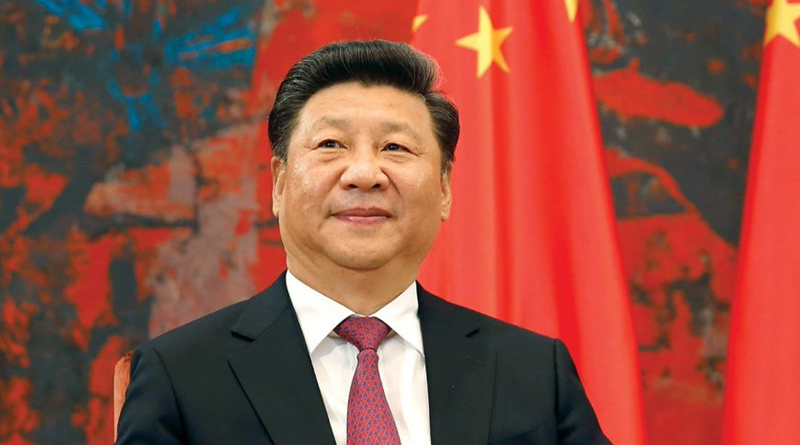Indian politicians and diplomats fear China’s Belt and Road Initiative (BRI), which aims to finance and build massive infrastructure projects in 78 countries, controlling infrastructure running through Asia and Europe. China believes this will help it dominate the 21st century.
Asia needs a lot of infrastructure. India itself is a partner with China in the New Development Bank and Asia Infrastructure Investment Bank. But BRI is far more ambitious, planning giant projects. Many are turning into white elephants. This is sparking a financial drama in Pakistan.
In worst-case scenarios, BRI will become a debt trap for borrowers who cannot repay Chinese loans. Indian diplomats fear this debt trap will make borrowers Chinese puppets, or at least give China strategic footholds (like naval bases) in these countries. Maybe so, but I suspect most borrowers will turn against an overweening China, not to it. Indeed, an over-ambitious BRI could blow up in China’s face, causing such massive loan defaults that China’s own financial system staggers.
Malaysia has just reneged on two major Chinese-financed projects worth $22 billion, calling them scams. It will not be the last.
In Pakistan, China is financing giant infrastructure projects called the China-Pakistan Economic Corridor (CPEC), costing $62 billion. Serious Pakistani analysts now fear the CPEC is a debt trap.
Today, Pakistan’s coffers are empty. It seeks $12 billion from the IMF. But US spokesman say they will not allow the IMF to lend money to Pakistan since this will rescue Chinese banks that made dud loans that Pakistan cannot repay. Trump is determined to scotch Chinese attempts to become economically dominant, and so has denied it a free ride on the global financial system. This is bad news for Pakistan and China. If the IMF shuns Pakistan, China will surely provide rescue funds in the short run. But this will damage the credibility and prestige of the BRI.
The IMF is the lender of last resort across the globe, rescuing many bankrupt countries. The BRI was supposed to provide additional finance, over and above traditional sources. Suddenly Trump’s action shows that borrowing from China can cut you off from the global financial system.
Many countries resent tough loan conditions of traditional financial institutions. China has offered them easy finance with little risk assessment for gigantic but dubious projects. It has no global tendering — all contracts go to Chinese companies, which can inflate costs. Easy Chinese money once seemed manna from heaven. But the implosion of Chinese projects in Sri Lanka and Malaysia shows easy loans can become burdens. Trump now warns that countries in a Chinese debt trap may lose access to international financial institutions.
Conditions for CPEC projects are opaque. The Financial Times says the return on equity is sometimes a whopping 34%, not the 17% normally assumed (which is anyway very high). The profit is guaranteed by the government regardless of project success or failure. Any failure can bankrupt the borrower.
This reminds me of Enron. It rushed into developing countries, offering to build huge infrastructure. It demanded high returns, guaranteed by governments regardless of project performance. Many countries including India and Argentina agreed. But when borrowers found the guarantee cost exorbitant, they reneged. A multitude of such defaults and fiascos ultimately busted Enron. That’s a warning to China.
In Sri Lanka, the Chinese-financed Hambantota port was a white elephant, unable to repay Chinese banks. China wrote off a billion dollars, in return for a 99-year port lease. Indian diplomats see this not as a financial debacle but a strategic Chinese triumph, getting a naval base by luring Sri Lanka into a debt trap. But Sri Lanka says it will not allow Hambantota to become a naval base.
Countries are prickly about sovereignty. Even the US in its prime faced local hostility to its bases in Asia. So will China if it tries to gain military bases through debt traps.
Moreover, Trump’s stand on Pakistan now indicates that BRI finance can sink borrowers, by reducing their access to traditional institutions. This will make BRI much less attractive, hitting China’s strategic ambitions.
Repeated BRI fiascos could endanger even the mighty finances of China. It already has the highest debt/GDP ratio in the world of over 300%. The 2008 financial crisis showed that even the richest nations can be felled by bad debts.
The grander BRI tries to be, the greater will be its risk of failure, financially and strategically. The more modest BRI is, the greater will be its chances of economic success. But the less will be its chances of strategic success and domination.


